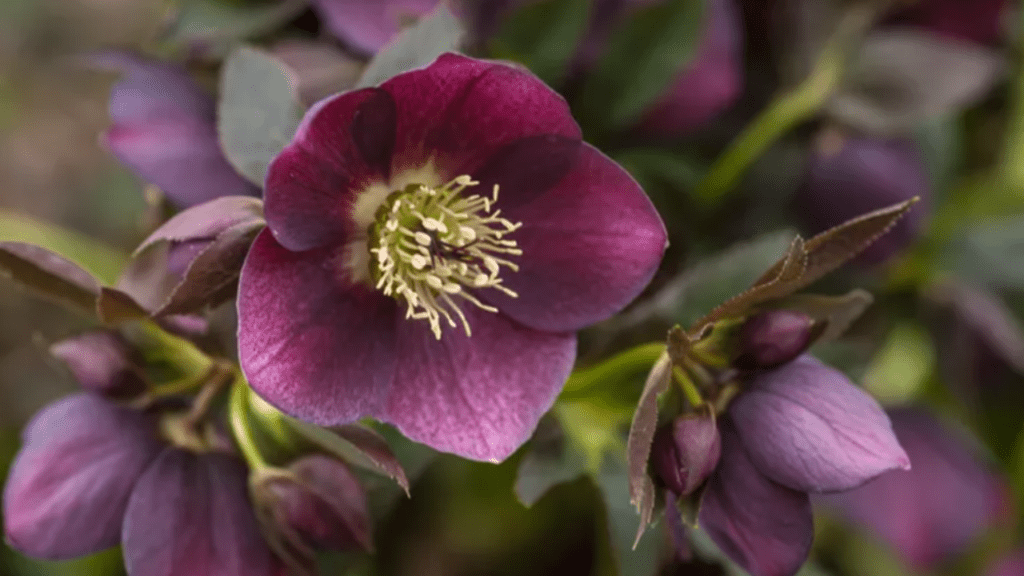
Top Tips for Planting and Caring for Hellebore Plants
A beginner, these tips will help you successfully grow and care for Hellebore plants in your garden. Hellebores, also known as Lenten roses, are a popular and beautiful perennial plant that blooms in late winter and early spring. With the right care and attention, you can enjoy their stunning flowers year after year. Follow these expert tips to ensure your Hellebore plants thrive in your garden.
Table of Contents
ToggleUnderstanding Hellebore Plants
Overview: Describe the hellebore plant, including its origins, varieties, and unique characteristics.
Hellebore plants, also known as Lenten roses, are native to Europe and Asia. They are a part of the Ranunculaceae family and are known for their early blooming flowers that appear in late winter and early spring. Hellebores come in a variety of species and hybrids, each with their own unique colors and markings, such as pink, purple, white, and green. They are also known for their long-lasting blooms and ability to thrive in shady areas, making them a popular choice for gardeners looking to add color to their landscape in the early spring months. Hellebore plants also have unique characteristics, such as their evergreen leaves and nodding, bell-shaped flowers that add a touch of elegance to any garden. When properly cared for, Hellebore plants can live for many years and continue to produce beautiful blooms season after season.
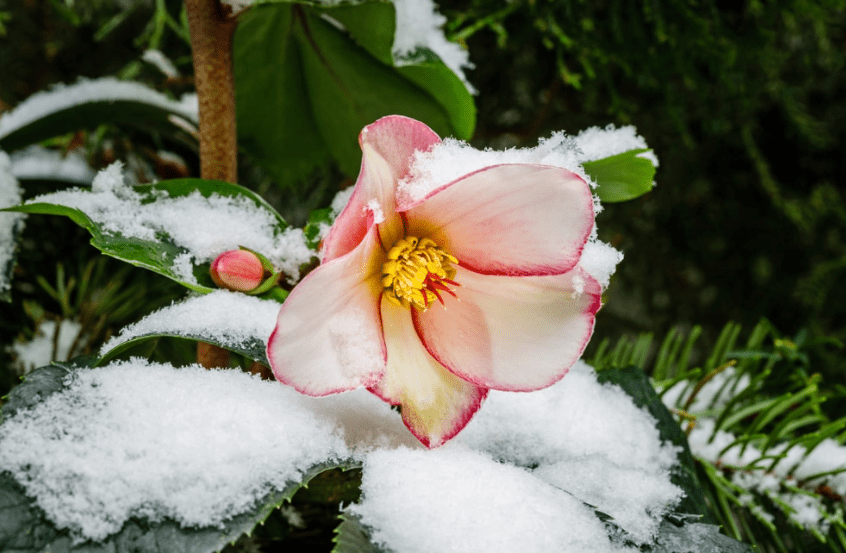
Best Time to Plant Hellebores
Ideal Planting Season: Explain the best time of year to plant hellebores for optimal growth.
Hellebores are best planted in the early spring or late fall. Planting them in the fall allows the roots to establish before the winter cold sets in, while planting in the early spring gives them a head start on growth before the heat of summer. It’s important to avoid planting hellebores in the peak of summer or winter, as extreme temperatures can stress the plant. It’s best to plant hellebores in well-draining soil and in a location with partial to full shade. With the right timing and conditions, hellebores can thrive and produce beautiful blooms year after year.
Soil Preparation: Discuss the importance of preparing the soil before planting, including tips on soil type, pH levels, and amendments.
When it comes to planting hellebores, soil preparation is crucial for the optimal growth and longevity of the plant. It’s important to choose a well-draining soil with a pH level of around 6.5 to 7.0. If the soil in your garden is not ideal for hellebores, you can improve it by adding organic matter such as compost or well-rotted manure to improve soil structure and fertility. You can also adjust the pH level by adding lime to raise the pH or sulfur to lower it. Before planting, it’s a good idea to loosen the soil to a depth of about 12 inches to help the roots establish and spread easily. Adding a layer of mulch around the plant can help retain moisture and suppress weed growth. By taking the time to properly prepare the soil, you can ensure that your hellebores have the best possible start and continue to thrive for many years to come.
How to Plant Hellebore Plants
Step-by-Step Planting Guide: Provide a detailed guide on how to plant hellebores, including spacing, planting depth, and watering.
When planting hellebores, it’s important to start with soil preparation. Choose a well-draining soil with a pH level of around 6.5 to 7.0. If your soil needs improvement, add organic matter such as compost or well-rotted manure. Adjust the pH level with lime to raise it or sulfur to lower it. Loosen the soil to a depth of about 12 inches before planting to help the roots establish and spread easily. When planting, make sure to space the hellebores about 18-24 inches apart and plant them at the same depth as they were in the container. Water the plants thoroughly after planting and add a layer of mulch to help retain moisture and suppress weed growth. By following these steps, you can ensure that your hellebores have the best possible start and continue to thrive for years to come.
Choosing the Right Location: Highlight the importance of selecting the right spot in the garden, considering factors like sunlight and shade.
When it comes to planting hellebores, choosing the right location is crucial for their health and growth. First and foremost, it’s important to select a well-draining soil with a pH level of around 6.5 to 7.0. If your soil needs improvement, you can add organic matter such as compost or well-rotted manure to enrich it. You can also adjust the pH level with lime to raise it or sulfur to lower it as necessary. It’s also important to loosen the soil to a depth of about 12 inches before planting to help the roots establish and spread easily.
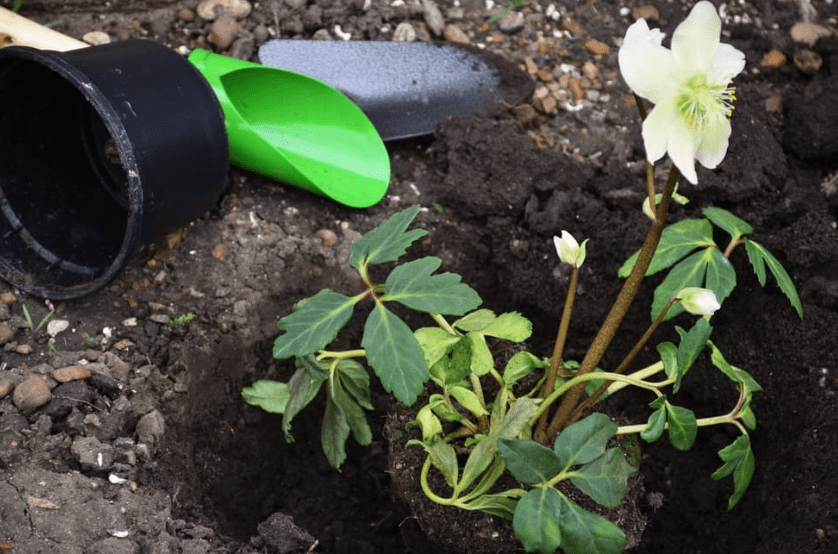
In terms of location, hellebores thrive in partial shade, so it’s important to consider factors like sunlight and shade when selecting a spot in your garden. When planting, make sure to space the hellebores about 18-24 inches apart and plant them at the same depth as they were in the container. After planting, it’s crucial to water the plants thoroughly and add a layer of mulch to help retain moisture and suppress weed growth. By following these steps and choosing the right location, you can ensure that your hellebores have the best possible start and continue to thrive for years to come.
Caring for Hellebore Plants
Watering Requirements: Outline the watering needs of hellebores, emphasizing the balance between keeping the soil moist and avoiding waterlogging.
Hellebores have specific watering needs that are essential to their health and growth. It’s important to strike a balance between keeping the soil moist and avoiding waterlogging. During the growing season, hellebores need regular watering, especially during dry periods. However, it’s important to ensure that the soil has good drainage to prevent waterlogging, which can lead to root rot. To achieve this balance, it’s recommended to water hellebores deeply but infrequently, allowing the soil to partially dry out between watering. This will help promote healthy root growth and prevent water-related issues. Additionally, it’s important to water the plants at the base to avoid getting water on the foliage, which can contribute to disease. By understanding and implementing the proper watering requirements, you can help your hellebores thrive and continue to flourish in your garden.
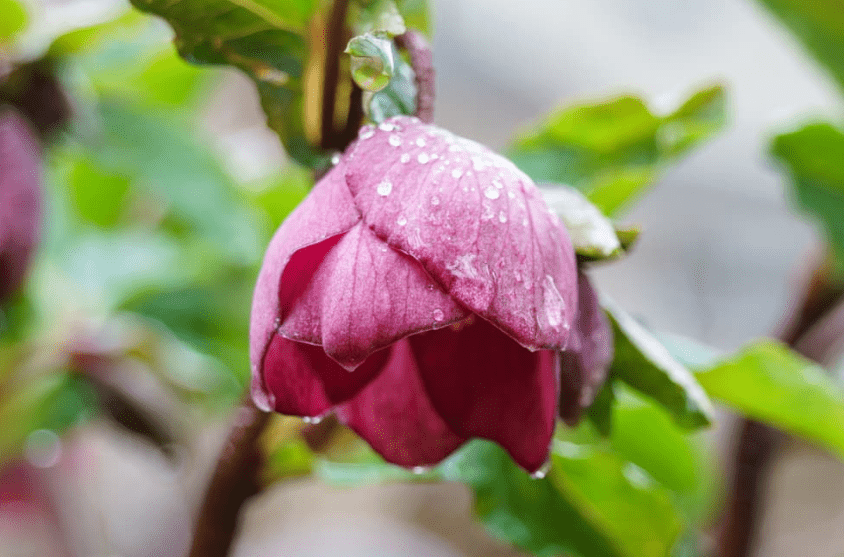
Fertilization Tips: Discuss the appropriate fertilization schedule and types of fertilizers that benefit hellebores.
When it comes to fertilizing hellebores, it’s important to use a balanced, slow-release fertilizer in the early spring before the new growth emerges. This will provide the plant with the necessary nutrients to support healthy growth and flowering. It’s also beneficial to use a fertilizer that is specifically formulated for flowering plants, as this will help promote the development of vibrant, beautiful blooms. Additionally, hellebores benefit from being fed again in the fall, as this will provide the necessary nutrients to support the plant through the winter months. As for the type of fertilizer, a well-balanced, organic fertilizer is recommended, as it will provide the plant with essential nutrients without the risk of chemical burn or excess salt accumulation in the soil. It’s important to follow the recommended dosage and application instructions on the fertilizer packaging to ensure the best results. By understanding the appropriate fertilization schedule and using the right types of fertilizers, you can help your hellebores thrive and continue to add beauty to your garden.
Common Issues and How to Address Them
Pests and Diseases: Identify common pests and diseases that affect hellebores and how to prevent and treat them.
Hellebores are susceptible to a few common pests and diseases that can affect their health and appearance. Some of the common pests that may affect hellebores include aphids, slugs, and snails. These pests can cause damage to the leaves and flowers of the plant. To prevent these pests, it’s important to regularly inspect the plant for any signs of infestation and take appropriate measures to control them, such as using insecticidal soap or setting up physical barriers to keep them away.
In terms of diseases, hellebores can be susceptible to fungal diseases such as powdery mildew and leaf spot. To prevent these diseases, it’s important to ensure proper air circulation around the plant and avoid overhead watering, as these conditions can promote the growth of fungi. In addition, removing any infected plant material and applying fungicidal treatments as needed can help control the spread of these diseases.
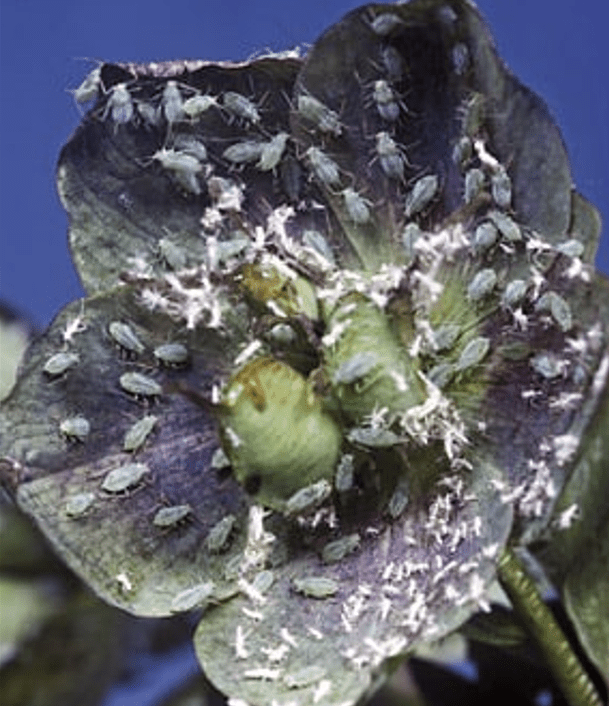
Overall, maintaining good plant hygiene, providing proper care and maintenance, and regularly monitoring for pests and diseases are key steps in preventing and addressing issues that may affect the health of hellebores. With proper attention and care, hellebores can continue to thrive and add beauty to your garden.
Signs of Stress: Explain how to recognize signs of stress in hellebore plants, such as yellowing leaves or lack of blooms, and what steps to take.
Hellebores, also known as Lenten roses, are beautiful and resilient plants, but they can still show signs of stress. Yellowing leaves, lack of blooms, and wilting are all signs that your hellebore plant may be under stress. It’s important to regularly inspect your plant for these signs and take appropriate measures to address them.
One common cause of stress in hellebores is pests such as aphids, slugs, and snails. These pests can cause damage to the leaves and flowers of the plant. To prevent these pests, it’s important to regularly inspect the plant for any signs of infestation and take appropriate measures to control them, such as using insecticidal soap or setting up physical barriers to keep them away.
In terms of diseases, hellebores can be susceptible to fungal diseases such as powdery mildew and leaf spot. To prevent these diseases, it’s important to ensure proper air circulation around the plant and avoid overhead watering, as these conditions can promote the growth of fungi. Removing any infected plant material and applying fungicidal treatments as needed can help control the spread of these diseases.
Overall, maintaining good plant hygiene, providing proper care and maintenance, and regularly monitoring for pests and diseases are key steps in preventing and addressing issues that may affect the health of hellebores. With proper attention and care, hellebores can continue to thrive and add beauty to your garden.
Seasonal Care Tips
Winter Care: Offer tips for protecting hellebores during harsh winter conditions.
During the winter, it’s important to take steps to protect your hellebores from harsh conditions. One tip is to provide a layer of mulch around the base of the plant to help insulate the roots and protect them from freezing temperatures. Additionally, you can cover the plants with a layer of burlap or a frost cloth to shield them from the cold and prevent any damage to the foliage. It’s also important to ensure that the plants are well-watered before the ground freezes, as this will help them withstand the winter months. Finally, if you experience heavy snowfall, gently brush off any snow that accumulates on the plants to prevent damage to the stems and leaves. By taking these measures, you can help your hellebores survive the winter and thrive once the warmer weather returns.
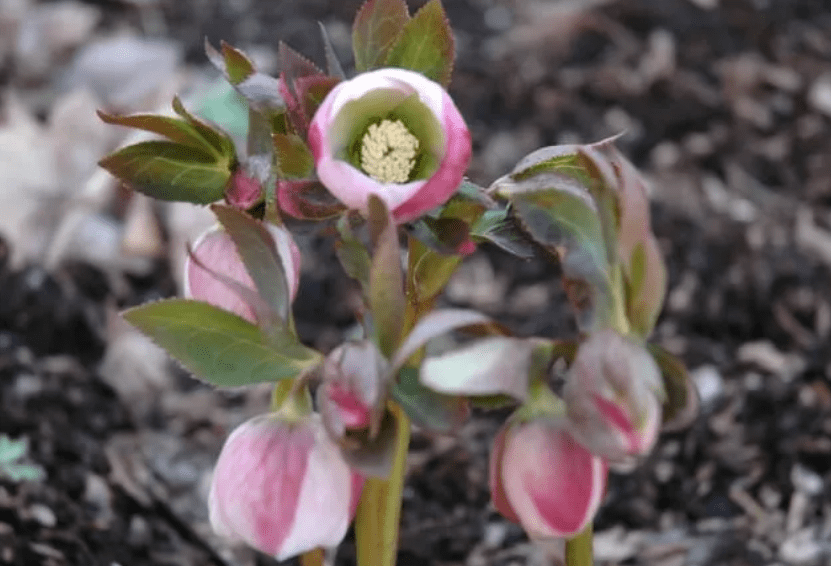
Propagating Hellebores
Can be a rewarding and enjoyable process. One method of propagation is through division. In early spring, carefully dig up the hellebore plant and use a sharp knife to divide the root ball into smaller sections, making sure each section has a few healthy roots and at least one bud. Replant the divided sections in a well-prepared, nutrient-rich soil and water thoroughly. Another method of propagation is through seed sowing. Collect the seeds from the hellebore plant and sow them in a well-draining potting mix. Place the pot in a shaded area and keep the soil consistently moist. It’s important to note that hellebore seeds can take some time to germinate, so be patient and continue to care for the seedlings until they are ready to be transplanted into the garden. With proper care and attention, you can successfully propagate hellebores and expand your garden with these beautiful and resilient plants.
Companion Planting with Hellebores
Best Companion Plants: Suggest plants that pair well with hellebores in the garden, enhancing their visual appeal.
When it comes to companion planting with hellebores, there are several plants that pair well with them in the garden, enhancing their visual appeal. Some great companion plants for hellebores include early spring bulbs such as snowdrops and daffodils, as they complement the hellebores’ early bloom time. Other shade-loving plants like ferns, hostas, and heucheras also make great companions for hellebores, creating a lush and diverse garden bed. Additionally, consider planting hellebores alongside other woodland plants such as pulmonaria, epimediums, and tiarellas for a harmonious and visually stunning garden display. By choosing the right companion plants for your hellebores, you can create a beautiful and balanced garden landscape.
Creating a Harmonious Garden: Discuss how to design a garden bed that complements hellebores and provides year-round interest.
When designing a garden bed that complements hellebores, it’s important to consider the overall aesthetic and balance of the space. Hellebores are known for their early spring blooms and their ability to thrive in shady areas, so it’s important to choose companion plants that will complement and enhance their visual appeal. One strategy for creating a harmonious garden bed with hellebores is to incorporate a mix of early spring bulbs such as snowdrops and daffodils, which will bloom alongside the hellebores and provide a colorful display. Additionally, consider planting shade-loving plants like ferns, hostas, and heucheras to create a lush and diverse garden bed that will thrive in the same conditions as the hellebores. To ensure year-round interest, you can also incorporate other woodland plants such as pulmonaria, epimediums, and tiarellas, which will provide visual appeal even when the hellebores are not in bloom. By carefully selecting companion plants and designing the garden bed with consideration for the hellebores’ unique characteristics, you can create a harmonious and visually stunning garden landscape.
Conclusion
In conclusion, Hellebore plants thrive in well-drained, fertile soil with partial shade. It’s important to water them regularly, especially during dry periods, and to fertilize them in the spring to promote healthy growth. Additionally, keeping an eye out for common pests and diseases, such as aphids and leaf spot, will help ensure the long-term health of your Hellebore plants. With the right care and attention, these beautiful and hardy plants will bring joy to your garden for years to come.
Frequently asked questions And Answer
Hellebore plants are best planted in the early spring or late fall, when the soil is cool and moist.
Hellebore plants prefer partial shade or filtered sunlight, especially in hotter climates.
Hellebore plants thrive in rich, well-draining soil with plenty of organic matter.
Hellebore plants prefer consistently moist soil, so they should be watered regularly, especially during dry periods.
Hellebore plants can be susceptible to aphids and black spot disease, so it’s important to monitor for these and treat as needed.
Hellebore plants are fairly hardy, but it’s a good idea to mulch around the base of the plant to protect the roots during the winter months.
Yes, hellebore plants can be divided and transplanted in the early spring or late fall, but they may take a year or two to fully establish in their new location.
Hellebore plants don’t require heavy fertilization, but a light application of a balanced, slow-release fertilizer in the spring can help promote healthy growth.
